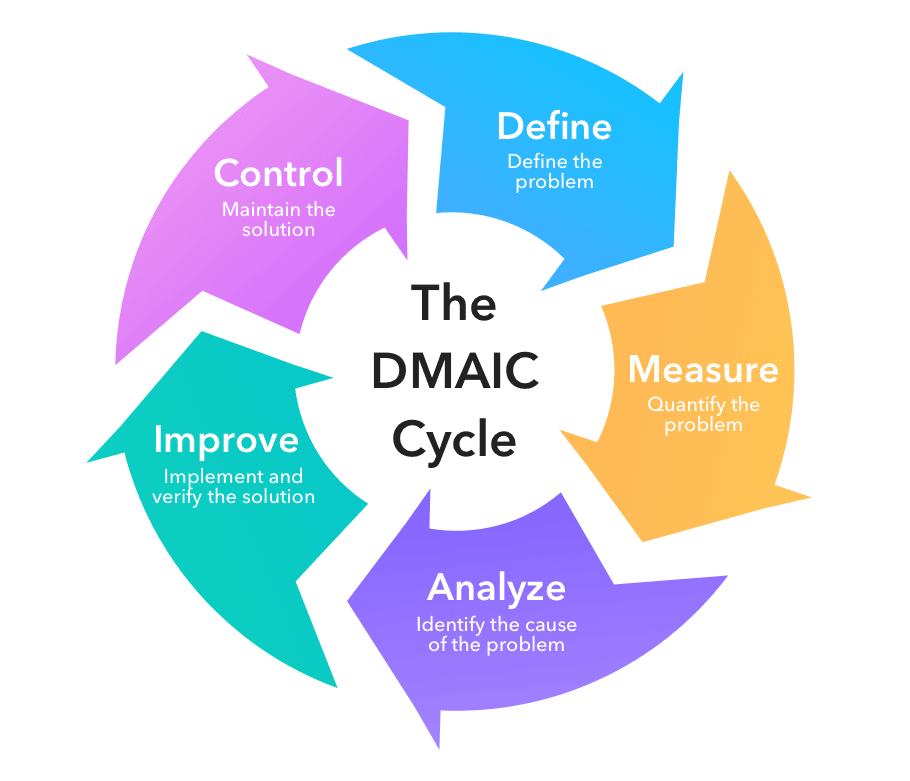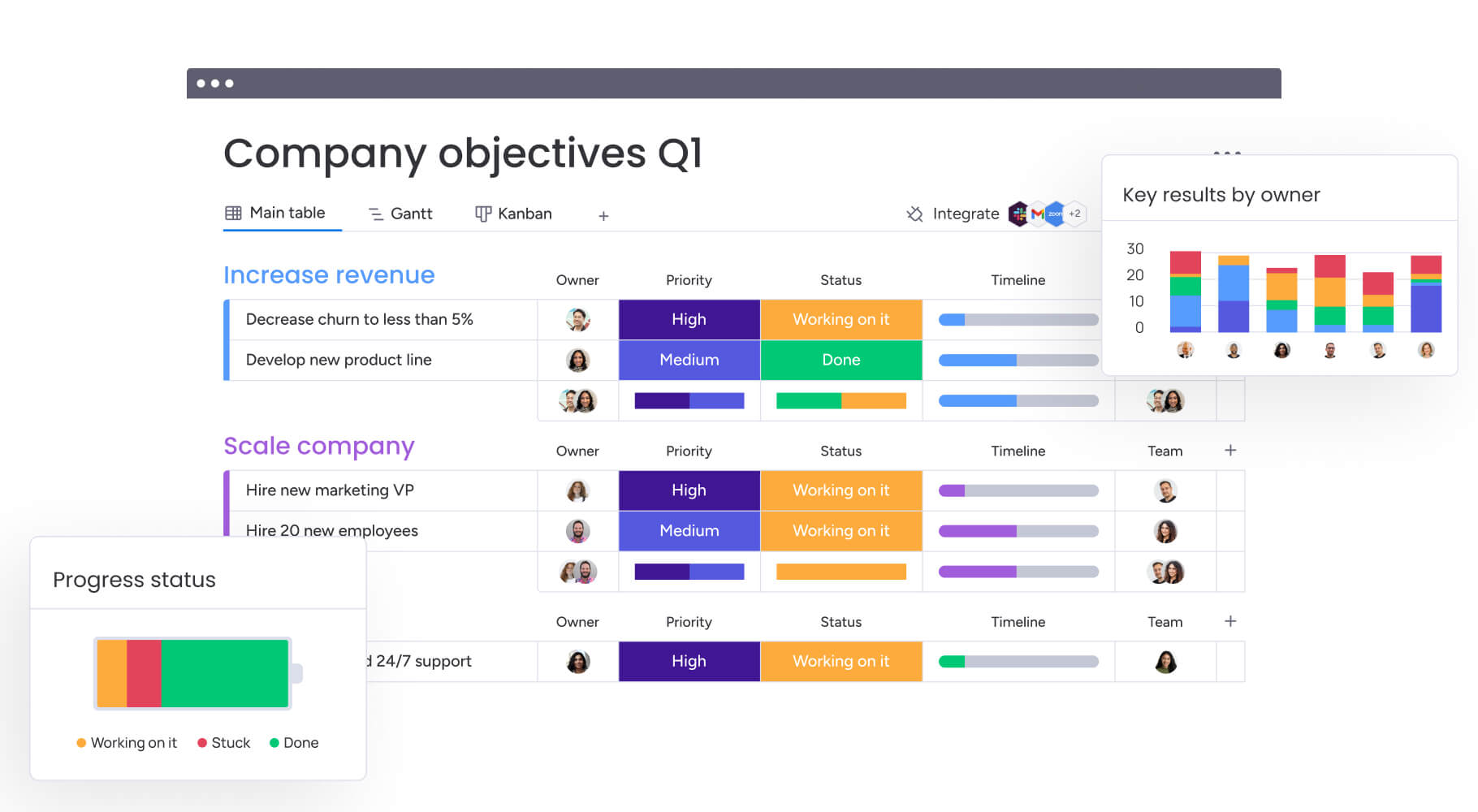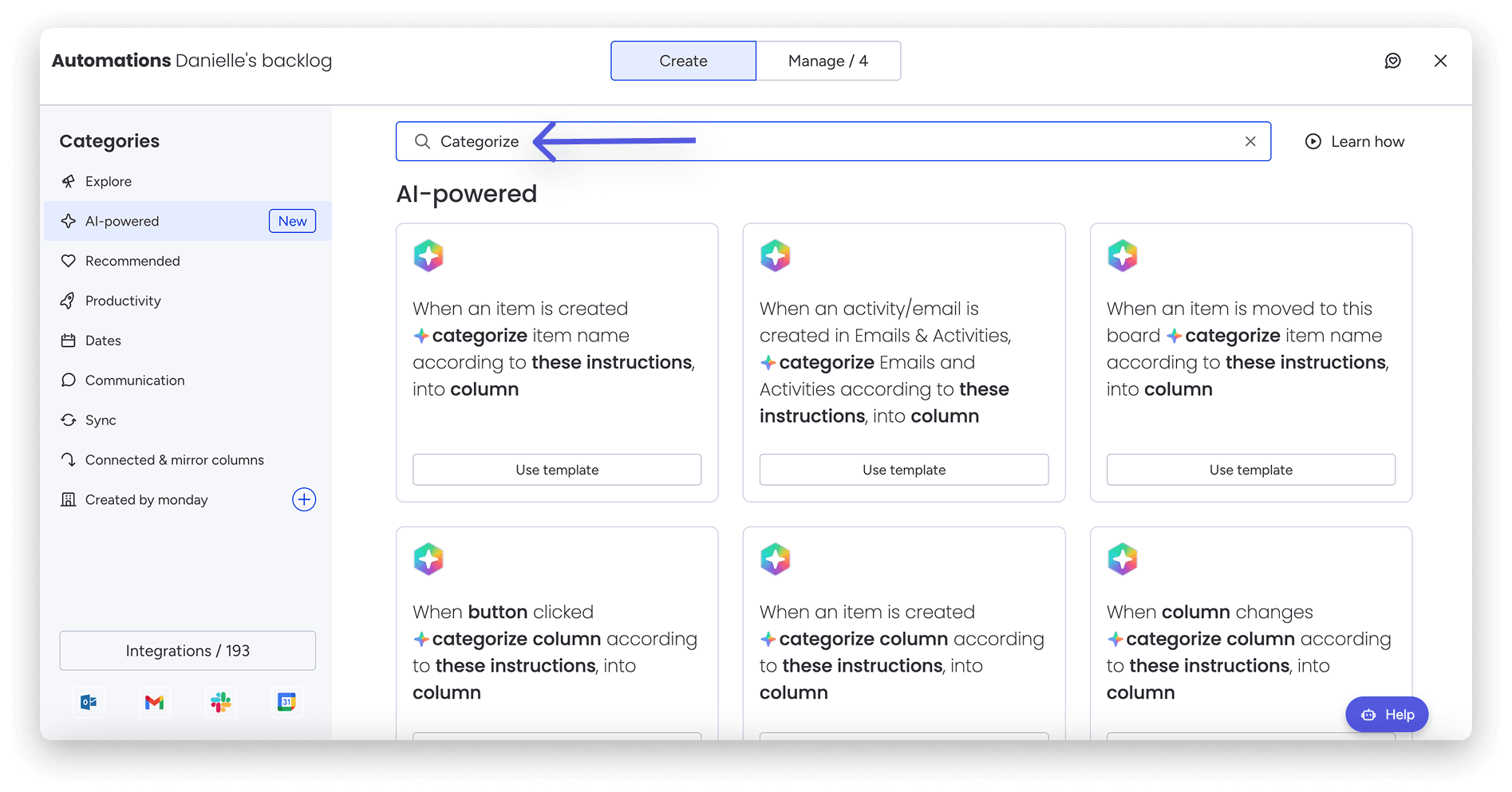Many project teams operate on a powerful combination of experience, intuition, and sheer effort. This approach often delivers results, but it also hides inefficiencies and inconsistencies that can quietly undermine project success. When every decision relies on a gut feeling, it becomes nearly impossible to guarantee repeatable, high-quality outcomes or pinpoint exactly why a project went off track.
True operational excellence requires a shift from reactive problem-solving to proactive process control. This is where six sigma project management provides a clear, data-driven path forward. It equips teams with a structured framework and statistical tools to measure performance, analyze root causes of defects, and eliminate process variation. By focusing on measurable data instead of assumptions, teams can systematically improve workflows, whether they are refining an existing process or designing a new one from the ground up.
This blog post will dive into how putting these powerful principles into a flexible platform like monday work management helps teams embed these data-driven methods directly into their projects, transforming abstract statistical goals into tangible actions.
What is six sigma in project management
Six sigma in project management is a data-driven methodology that uses statistical analysis to eliminate defects and reduce process variation in project outcomes. It aims for just 3.4 defects per million opportunities, which translates to 99.99966% accuracy in project delivery.
The methodology originated at Motorola in 1986 and focuses on meeting customer requirements through measurable, statistical evidence rather than intuition. Six sigma transforms project management from guesswork into a precise science where every decision is backed by data.
The basics of six sigma methodology
What is six sigma methodology exactly?
Six sigma treats every project element as a measurable process that can be improved through statistical analysis.
The methodology defines specific terms that project managers need to understand to implement it effectively.
The key concepts are:
- Defects: Any outcome that fails to meet customer expectations
- Variation: The degree to which a process deviates from expected results
- Process capability: A process’s ability to consistently produce results within specifications.
These measurements help project teams identify exactly where improvements are needed.
Why data-driven approaches matter
Traditional project management often relies on experience and gut feelings, but six sigma uses statistical evidence to guide every decision. This approach removes bias from project choices and provides objective measures of success.
Data-driven project management delivers predictable outcomes through statistical models that forecast results. Teams can identify optimization opportunities before problems occur, leading to more successful project completion rates.
Key six sigma methodologies
Six sigma offers two primary methodologies for project management, each designed for different situations. Choosing the right approach depends on whether you’re improving existing processes or creating new ones from scratch.
1. DMAIC overview
DMAIC stands for Define, Measure, Analyze, Improve, and Control, and is used for improving existing project processes. This methodology works best when current processes have identifiable problems that need systematic solutions.
The five phases create a structured approach to problem-solving.
- Define identifies project scope and customer requirements
- Measure collects baseline data on current performance
- Analyze finds root causes of defects or delays
- Improve implements solutions based on data analysis
- Control monitors and sustains improvements over time.

2. DMADV overview
Teams rely on DMADV (Define, Measure, Analyze, Design, and Verify) to create new project processes or products. Choose this methodology when your current workflows need a ground-up redesign or if you’re starting an entirely new project.
This approach focuses on designing new solutions rather than fixing existing ones. The Verify phase ensures new processes meet customer requirements before full implementation.
3. Lean six sigma and project management
Is lean six sigma a project management methodology? Lean six sigma combines lean principles with six sigma to address both speed and quality in project delivery. Lean focuses on eliminating waste while six sigma reduces variation, creating more efficient project workflows.
This combination emphasizes value stream mapping and continuous flow to identify bottlenecks. Teams can eliminate non-value-added activities while maintaining quality standards throughout project execution.
Six sigma belt system: six sigma uses a martial arts-inspired belt system to designate expertise levels. White belts have basic awareness, Yellow belts support projects part-time, Green belts lead small projects, Black belts manage major initiatives full-time, and Master Black belts mentor others across the organization.
How lean six sigma enhances project workflows
Lean six sigma project management helps project teams identify bottlenecks and eliminate activities that don’t add value to project outcomes by:
Identifying defects and minimizing waste
Project management contains eight types of waste that six sigma methodology helps eliminate. These include transportation delays, excess inventory, unnecessary motion, waiting time, overproduction, over-processing, defects requiring rework, and underutilized skills.
Six sigma statistical methods help quantify these wastes in measurable terms. Common project wastes include delays between project phases, creating deliverables before they’re needed, and rework due to quality issues that could have been prevented.
Integrating lean six sigma project tactics
Value stream mapping visualizes project workflows to identify inefficiencies and bottlenecks. Kanban boards set work-in-progress limits to prevent overloading team members, while poka-yoke techniques mistake-proof project processes.
monday work management supports these lean principles through customizable workflows and automation capabilities. Teams can visualize their processes, set capacity limits, and automate quality checkpoints to prevent errors before they occur.
Essential capabilities for six sigma methodology
Statistical and analytical tools form the foundation of six sigma’s effectiveness in project management. The following tools empower teams to make decisions based on concrete data rather than assumptions or past experience:
Statistical analysis and control charts
Control charts graph process performance over time with upper and lower control limits that show when project processes are operating normally or experiencing unusual variation. These visual tools help project managers spot problems before they impact deliverables.
Basic statistical concepts include mean (average performance), standard deviation (how much data spreads from the average), and process capability (how well a process meets specifications). Understanding these measurements helps teams maintain consistent project quality.
Process mapping and FMEA
Process mapping creates visual documentation of project workflows, making it easier to spot inefficiencies and improvement opportunities. These maps show how work flows from one stage to the next and where delays typically occur.
FMEA (Failure Mode and Effects Analysis) systematically identifies potential project risks and their impact on outcomes. This proactive approach helps teams prevent problems before they occur rather than reacting to issues after they’ve already caused delays.
Automation platforms with six sigma project tracking
Modern project management platforms — 82% of employees use work/project management software — can automate six sigma measurements and reporting, eliminating manual data collection and analysis. Real-time dashboards, automated data collection, and statistical analysis capabilities streamline the entire process.
monday work management provides teams with capabilities to monitor quality indicators, process variation, and defect rates without switching between multiple platforms.

How to structure six sigma program management within your organization
Implementing six sigma program management requires executive sponsorship and organizational commitment to data-driven decision making. Here’s what it take to transform your entire organization’s approach to project management:
Belt roles and responsibilities
Six sigma uses a structured certification system to ensure team members have appropriate skills for their roles. Each belt level requires different time commitments and training duration based on project complexity and leadership responsibilities.
The belt system creates clear career progression paths for six sigma practitioners. Organizations can develop internal expertise while maintaining consistent quality standards across all six sigma projects.
PMP vs six sigma certifications
PMP vs six sigma certification choices depend on career goals and organizational needs. PMP certification focuses on project management processes and frameworks, while six sigma certification emphasizes quality improvement and statistical analysis techniques.
Many professionals pursue both certifications to complement their skill sets. PMP provides broad project management knowledge , while six sigma offers specialized quality improvement expertise that can be applied across various project types.
Cross-functional teams for six sigma projects
Six sigma projects require diverse expertise from different departments to address complex organizational challenges. Team members should understand both the technical aspects of six sigma and the business processes being improved.
Collaboration platforms help facilitate cross-functional teamwork by providing shared workspaces where team members can access project data, communicate updates, and track progress . monday work management enables cross-departmental collaboration through customizable boards that accommodate different team workflows and reporting needs.
Try monday work managementPractical techniques that actually work
These actionable six sigma techniques can be implemented immediately to solve real project management challenges and improve outcomes. Each technique addresses specific pain points that project teams commonly experience.
1. Setting baseline metrics and goals
Establish current performance measurements before making any improvements to create a clear starting point for comparison. Use SMART goals (Specific, Measurable, Achievable, Relevant, Time-bound) for all six sigma projects to ensure success can be objectively measured.
Common project metrics include cycle time (how long processes take), defect rates (how often things go wrong), and customer satisfaction scores (how well outcomes meet expectations). These baseline measurements provide the foundation for all improvement efforts.
2. Creating real-time dashboards for six sigma project tracking
Visual dashboards help teams monitor six sigma metrics continuously rather than waiting for periodic reports. Key dashboard elements include control charts showing process stability, trend analysis revealing patterns over time, and performance indicators highlighting areas needing attention.
monday work management’s dashboard capabilities can display six sigma metrics alongside traditional project management data. Teams can create custom widgets that show defect rates, process variation, and quality indicators in real-time, enabling faster response to emerging issues.
3. Using AI to reduce variation and process delays
AI can identify patterns in project data that humans might miss, supporting six sigma principles through predictive analytics—an approach made increasingly feasible as AI tools faster and much less expensively execute repetitive improvement tasks than human experts. 80% of Millennials believe AI can help them do their jobs better, underscoring rising confidence in using AI to reduce variation and project delays. These systems can flag potential delays or quality issues before they occur, allowing teams to take preventive action.
monday work management’s AI blocks help categorize project data, analyze trends, and predict outcomes based on historical patterns. Teams can automate quality checkpoints and receive alerts when processes deviate from expected performance ranges.

4. Embedding lean six sigma in everyday work
Make six sigma part of regular project routines by integrating quality checkpoints into existing project phases . Consistently measuring quality should become a habit rather than a separate activity that adds extra work to team schedules.
Build quality gates into project workflows where teams must meet specific criteria before moving to the next phase. This prevents defects from accumulating and reduces the need for extensive rework later in the project lifecycle.
Quick win: Start with small, measurable improvements that can be completed in 30-60 days. These quick wins build momentum and demonstrate six sigma’s value before tackling larger, more complex process improvements that require significant organizational change.
Comparing leading platforms for 6 sigma project management
Different project management platforms offer varying levels of support for six sigma capabilities like statistical analysis, process mapping, and quality tracking. How do you choose the right platform for your six sigma initiatives?
Understanding platform capabilities helps organizations select the right foundation for their six sigma practices. Each platform offers different strengths that align with specific organizational needs and technical requirements.
- monday work management: Offers customizable boards for tracking six sigma metrics, automation for quality checkpoints, and AI features for predictive analysis
- Asana: Provides strong project tracking and collaboration features but has limitations in statistical analysis and customization for six sigma methodologies.
- Trello: Simple visual approach suitable for basic project tracking but lacks advanced analytics needed for comprehensive six sigma implementation
- ClickUp: Customization options and multiple project views with reporting capabilities that can support basic six sigma tracking
- Smartsheet: Spreadsheet-like interface with robust reporting and dashboard capabilities for teams comfortable with Excel-based analysis
- Wrike: Custom workflows and reporting capabilities with integration options that can support six sigma projects
monday work management distinguishes itself through its robust support for six sigma project methodology requirements by offering a highly adaptable environment where teams can integrate six sigma principles directly into their daily workflows.
The platform enables configuration of custom boards to map each DMAIC phase, supports statistical process control with real-time dashboards, and streamlines data collection for metrics like defect rates and cycle times.
Built-in automation allows teams to create quality checkpoints, trigger alerts for out-of-spec results, and standardize improvement processes without the need to move between disparate tools.

This comprehensive flexibility ensures teams can execute six sigma projects from initial problem definition through control and sustainment—all within a single, collaborative workspace, making it easier to maintain project visibility and drive continual improvement.
Try monday work managementWhere to go next with six sigma projects
Implementing six sigma in project management requires both a solid understanding of the methodology and the right platform to support data-driven decision making. Start by applying the practical techniques covered above and building your team’s statistical analysis capabilities.
Consider which belt level certifications align with your career goals and organizational needs. Begin with small pilot projects to demonstrate six sigma’s value before expanding to larger, more complex initiatives that require significant organizational change. Organizations typically start with training key personnel, selecting pilot projects, and establishing measurement systems before scaling across departments.
monday work management can support your six sigma journey through customizable workflows, real-time analytics, and AI-powered insights that help identify improvement opportunities while maintaining the flexibility to adapt as your six sigma practices mature.
FAQs
What are the 5 main phases of a six sigma project?
The five main phases of a six sigma project are Define, Measure, Analyze, Improve, and Control (DMAIC). Each phase builds systematically on the previous one to identify problems, analyze root causes, and implement sustainable solutions.
Which certification is more valuable, six sigma PMP certification or PMP alone?
Six sigma pmp certification and PMP certifications serve different purposes and complement each other well. PMP focuses on project management processes while six sigma emphasizes quality improvement and statistical analysis, making both valuable for comprehensive project leadership.
What is the six sigma project theory?
Six sigma project theory is based on the principle that all work processes can be measured, analyzed, and improved using statistical methods. The theory aims to reduce process variation to achieve near-perfect quality with no more than 3.4 defects per million opportunities.
How long does a typical 6 sigma project take to complete?
A typical 6 sigma project takes 3-6 months to complete, depending on the complexity of the process being improved. Green Belt projects usually require 3-4 months while Black Belt projects may need 4-6 months for full implementation.
Can six sigma and Agile methodology work together in project management?
Six sigma and Agile methodology can work together by incorporating quality measurements and statistical analysis into agile sprints. Many organizations successfully combine both approaches to achieve speed and quality in their projects.
What skills do team members need for project management six sigma implementation?
Team members need basic statistical knowledge, problem-solving skills, and familiarity with process mapping and data analysis. Most organizations provide training through belt certification programs to develop these essential skills systematically.
